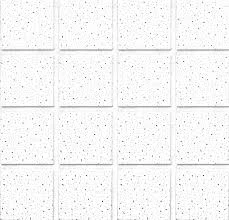9 月 . 12, 2024 02:29 Back to list
Ceiling Access Panel Design - Durable & Functional Solutions
Ceiling Access Panel Design Enhancing Functionality and Aesthetics
In modern construction and architectural design, the integration of ceiling access panels has become imperative. These panels not only facilitate easy access to maintenance spaces and essential building services but also contribute significantly to the overall aesthetics of a space. A well-designed ceiling access panel ensures that functionality does not compromise the visual appeal of an interior.
Understanding Ceiling Access Panels
Ceiling access panels are strategically installed in ceilings to provide entry to the areas above, typically used for housing electrical wiring, plumbing, ductwork, or HVAC systems. They are essential in both residential and commercial buildings, allowing for repairs and inspections without the need to disrupt the surrounding architecture. The design of these panels varies, ranging from functional to high-end decorative variants, making it crucial for architects and contractors to choose suitable styles according to the project’s needs.
Design Considerations
When designing ceiling access panels, there are several critical factors to consider
1. Functionality The primary purpose of any access panel is to provide convenient access. They should be placed in locations that allow for easy entry while avoiding interference with lighting fixtures, fire alarms, and other ceiling-mounted elements.
2. Material Selection The materials used in manufacturing the access panel should match the ceiling's material and finish. Common materials include metal, plastic, and drywall. Metal panels are typically more durable, while drywall panels can be painted to blend seamlessly with the surrounding ceiling.
ceiling access panel design

3. Aesthetic Integration For spaces where appearance matters, choosing panels that are discreet and can be painted or texturized to match the ceiling can help maintain a cohesive design. Some modern access panels are designed to be flush with the ceiling plane, making them virtually invisible.
4. Size and Accessibility The size of the access panel must accommodate the access requirements without compromising structural integrity. Additionally, ease of opening is crucial; panels can be designed to hinge, slide, or drop down, depending on the application and available space.
5. Compliance and Safety Depending on the building code requirements, certain materials, and designs may be required. Ensuring compliance with building regulations is essential for safety and functionality.
Trends in Access Panel Design
As architectural trends evolve, so do the designs of ceiling access panels. Emerging trends include modular panels, which offer customization for various ceiling types, and panels that incorporate soundproofing technologies to minimize noise transfer between spaces. The increase in open-plan designs also drives innovation in this field, prompting designers to create more aesthetically pleasing and unobtrusive access solutions.
Conclusion
In conclusion, ceiling access panel design represents a perfect blend of form and function. By understanding the critical considerations involved—such as accessibility, material choice, and aesthetic integration—designers can create solutions that not only serve practical purposes but also enhance the overall look of a space. As technology and design philosophies advance, the potential for innovative ceiling access solutions is boundless, encouraging a new era of architectural ingenuity.
-
Revolutionizing Interior Design with Ceilings t grid Suspended SystemNewsOct.29,2024
-
Revolutionizing Ceiling Design with ceiling access panel with Gypsum Tile WaterproofNewsOct.29,2024
-
Revolutionizing Interior Design with PVC Gypsum Ceiling: A Comprehensive GuideNewsOct.29,2024
-
Elevating Interior Design with High quality Mineral Fiber Ceiling TilesNewsOct.29,2024
-
Revolutionizing Interior Design with PVC Gypsum Ceiling: A Comprehensive GuideNewsOct.29,2024
-
Elevating Interior Design with High-Quality Mineral Fiber Ceiling Tiles: A Comprehensive GuideNewsOct.29,2024







